In the vast sea of essays, how do you ensure your words are the ones that hook your readers and never let them go? Crafting a good hook for your essay is an essential skill that can make or break your piece. Whether you’re an aspiring writer, a student tackling an assignment, or even a seasoned wordsmith looking to enhance your writing prowess, understanding how to write a good hook for an essay is a game-changer.
Picture this: you’ve just opened a book, and within the first few lines, you’re captivated. Suddenly, time stands still as you become immersed in the author’s words, unable to put the book down. A well-crafted hook in an essay has the exact same effect. It’s the irresistible lure that compels your readers to dive deeper into your essay, eager to uncover the gems of knowledge and insight you have to offer. But how do you create such a hook? How do you grab your readers’ attention and hold it firmly in your grasp?
Fear not, for today we will unravel the secrets of how to write a good hook for an essay. From intriguing anecdotes to thought-provoking questions, we will explore a vast array of essay format techniques that will elevate your writing to new heights and leave your readers hungry for more. So, buckle up and get ready to learn the art of crafting a captivating hook that will have your audience begging for the next sentence. It’s time to dive into the world of essay writing and unravel the mysteries of the perfect hook.
What Is A Hook In An Essay?

A hook in an essay is a compelling opening sentence or paragraph designed to grab the reader’s attention and encourage them to continue reading. It functions as a means to spark the reader’s curiosity, drawing them into the essay’s topic. A well-crafted hook not only sets the tone for the entire essay but also establishes the writer’s voice and establishes a connection with the reader. Hooks can take various forms, including questions, quotes, statistics, surprising facts, or vivid descriptions. The primary goal is to make the reader eager to explore the essay further, engaging them emotionally or intellectually.
How Does ConchAI Bypass AI Detection Tools?
ConchAI, the original AI detection bypass tool, ensures a 99.99% chance of avoiding detection after use. This tool shields users from algorithms like GPTZero and TurnItIn, providing a seamless and efficient solution for essay writing. With ConchAI, essays can be produced ten times faster without triggering AI detection. The tool facilitates effortless citation addition, aids in rewriting content to be undetectable by AI algorithms, and offers various features to save students time, allowing them to focus on understanding the content.
Who Can Benefit From ConchAI?
Whether you’re a Chegg user, a high school or college student, or anyone tasked with writing papers, ConchAI is tailored to make your academic life easier. By effortlessly bypassing AI detection tools, ConchAI becomes an invaluable resource for those who wish to save time and streamline their essay writing process. Join over a million users who have already harnessed the power of ConchAI to navigate through the challenges of AI detection and elevate their essay writing experience.
How Can You Start Using ConchAI?
Signing up for ConchAI is a straightforward process, and the best part is, you can start using the tool for free today. By visiting our website, creating an account, and exploring the features of our AI Essay Writer, you can unlock a world of stress-free, undetected essay writing. Don’t waste another minute grappling with AI detection tools—join the ConchAI community and revolutionize your approach to academic writing. Sign up and use Conch’s AI Essay writer for free today.
Related Reading
- How To Write An Essay
- Types Of Essays
- Essay Structure
- Words To Start A Paragraph
- How To Write An Analytical Essay
- How To Start Off An Essay
- What Makes A Good Thesis Statement
- How To Write A 5 Paragraph Essay
- How To Write A Personal Essay
- Argumentative Essay Topics
- What Is an Expository Essay
- How to Write a Conclusion for an Argumentative Essay
- College Essay Outline
What Makes A Great Essay Hook?

When it comes to writing an essay, you want to grab your reader’s attention right from the start. This is where a good hook comes into play. A hook is a compelling opening line or paragraph that immediately draws your reader in and makes them want to continue reading. It sets the tone for your essay and piques the curiosity of your audience. In this guide, we will explore the key elements that make a great essay hook.
1. Start with a Surprising Fact or Statistic: Ignite Curiosity
One effective way to grab your reader’s attention is to start with a surprising fact or statistic related to your topic. This immediately piques their interest and makes them curious to learn more. For example, if you’re writing an essay about the importance of recycling, you could start with a shocking statistic like “Did you know that the average American throws away enough garbage in a year to fill 63,000 garbage trucks?” This statistic immediately grabs attention and creates a desire to find out more about the topic.
2. Tell a Compelling Story: Connect on an Emotional Level
Humans are wired to connect with stories. By starting your essay with a captivating anecdote or personal story, you create an emotional connection with your readers. This can be a powerful tool to make them invested in your essay and eager to learn more. For instance, if you’re writing an essay about overcoming adversity, you could begin with a personal story about a difficult challenge you faced and how you overcame it. This personal touch adds authenticity to your essay and hooks your readers from the start.
3. Ask a Thought-Provoking Question: Engage Your Readers’ Minds
Another effective way to hook your readers is by asking a thought-provoking question that relates to your essay topic. This engages their minds and makes them actively think about the subject matter. For example, if you’re writing an essay about the impact of social media on society, you could start with a question like “Have you ever stopped to think about how social media has transformed the way we communicate and connect with others?” This question immediately gets your readers thinking and sets the stage for the discussion that follows.
4. Use a Powerful Quote: Harness the Words of Others
Quotations can be a powerful tool to capture your readers’ attention and add credibility to your essay. Choose a quote that is relevant to your topic and resonates with your audience. It could be a line from a famous philosopher, a thought-provoking statement from a renowned author, or even a powerful lyric from a song. For example, if you’re writing an essay about the pursuit of happiness, you could start with a quote from Albert Einstein: “The true sign of intelligence is not knowledge but imagination.” This quote immediately sets the tone for your essay and sparks curiosity.
5. Use Vivid Description: Paint a Picture in Your Readers’ Minds
Painting a vivid picture with your words can captivate your readers and transport them into the world of your essay. Use sensory language to describe a scene or evoke emotions. For instance, if you’re writing an essay about a beautiful sunset, you could start with a description like “The sky was ablaze with hues of fiery orange and vibrant pink, casting a warm glow upon the tranquil horizon.” This description creates a captivating visual image in your readers’ minds and entices them to keep reading.
Related Reading
- Argumentative Essay
- Expository Essay
- Essay Outline
- Narrative Essay
- Persuasive Essay
- Transition Sentences
- Synthesis Essay
- Rhetorical Analysis Essay
- Descriptive Essay
- Critical Analysis Essay
- Memoir Essay
- First Person Essay
- Formula For A Thesis Statement
- How to Write a Conclusion for an Essay
- College Essay Format
- Narrative Essay Topics
- Unique Argumentative Essay Topics
- Expository Essay Topics
- Argumentative Essay Transition Words
- Good Persuasive Essay Topics
- Persuasive Essay Topics College
- College Argumentative Essay Topics
8 Types of Essay Hooks

1. Start with a Surprising Fact or Statistic
One powerful way to grab your readers’ attention is by presenting them with a surprising fact or statistic related to your essay topic. This can instantly pique their curiosity and make them eager to learn more. Remember, the goal here is to provide something unexpected and intriguing that will make your readers sit up and take notice.
2. Pose a Thought-Provoking Question
Another effective hook is to start your essay with a thought-provoking question. This can be a rhetorical question or a direct inquiry that challenges your readers to think deeply about the topic at hand. By engaging their minds right from the start, you’ll encourage them to continue reading in search of answers or to explore their own thoughts and opinions on the subject.
3. Share an Anecdote or Personal Story
Humans are naturally drawn to stories, so incorporating an anecdote or personal story can be a compelling hook for your essay. Choose a story that is relevant to your topic and allows readers to connect with it on an emotional level. By sharing a personal experience, you create an immediate bond with your audience and make your essay more relatable.
4. Use a Powerful Quote
Quotations from famous individuals can add credibility and depth to your essay. Select a quote that resonates with your topic or captures the essence of your argument. Make sure the quote is relevant and impactful, as it will serve as the foundation for your essay’s main theme. By starting with a powerful quote, you’ll captivate your readers and create a strong first impression.
5. Present an Astonishing Scenario
Painting a vivid picture of an astonishing scenario can instantly captivate your readers and stimulate their imagination. Describe a situation or event that seems almost unreal, but is directly related to your essay topic. By transporting your readers into this unique scenario, you’ll spark their interest and compel them to read further to discover more about this extraordinary world you’ve created.
6. Start with a Bold Statement
A bold statement can be a powerful way to grab your readers’ attention and make them curious about your essay’s argument. Start with a controversial or thought-provoking statement that challenges commonly held beliefs or presents a fresh perspective on the topic. By assertively stating your position, you’ll compel readers to continue reading to understand your reasoning and explore your essay’s main points.
7. Begin with a Startling or Dramatic Image
An image can often convey emotions and ideas more effectively than words alone. Start your essay with a startling or dramatic image that captures the essence of your topic. This could be a detailed description of a scene, a metaphorical image, or even a captivating visual representation. By engaging your readers’ senses, you’ll create a lasting impression and draw them into your essay.
8. Share a Relevant and Intriguing Factoid
A factoid is a small, interesting piece of information that is relevant to your essay topic. It can be a lesser-known fact or a fascinating detail that most people are unaware of. Including a factoid at the beginning of your essay can instantly captivate your readers and make them eager to learn more. This hook is particularly effective when the factoid is directly connected to your essay’s main argument or thesis statement.
20 Most Helpful Tips On How To Write A Good Hook for An Essay
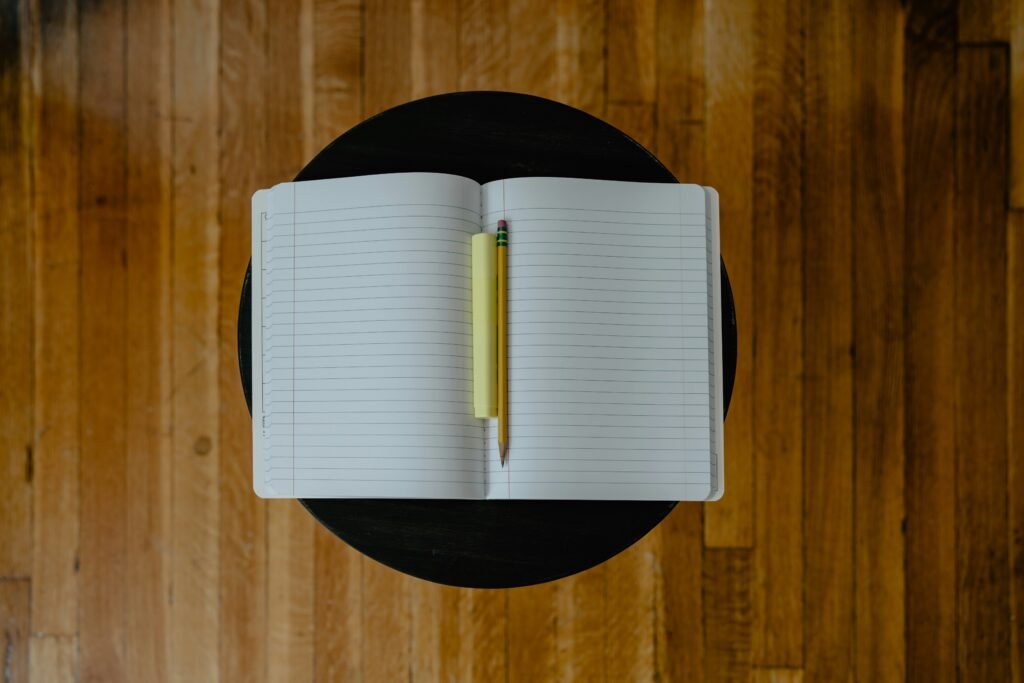
1. Understand the Purpose of the Hook:
The hook is the opening line or lines of your essay that grab the reader’s attention and make them want to keep reading. It should set the tone for your essay and pique the reader’s curiosity.
2. Start with an Interesting Fact
Begin your essay with a surprising or intriguing fact that is relevant to your topic. This can instantly captivate your reader and make them eager to learn more.
3. Use a Question
Ask a thought-provoking question that relates to your essay topic. This immediately engages the reader and encourages them to continue reading to find the answer.
4. Tell a Story
Begin your essay with a compelling anecdote or story that illustrates the main theme or idea of your essay. This personalizes the topic and creates an emotional connection with the reader.
5. Use a Quote
Start your essay with a powerful quote that relates to your subject matter. This can be from a famous person, a book, or even a movie. It adds credibility and intrigue to your essay.
6. Create a Vivid Description
Use descriptive language to paint a vivid picture in the reader’s mind. This can be done by appealing to the senses and using strong imagery.
7. Start with a Startling Statistic
Begin your essay with a surprising statistic or data point that highlights the importance of your topic. This grabs the reader’s attention and makes them realize the significance of what you’re discussing.
8. Use an Anecdote
Share a short, personal story that relates to your essay topic. This allows the reader to connect with you on a deeper level and sets the stage for the rest of your essay.
9. Make a Bold Statement
Start your essay with a bold and attention-grabbing statement that challenges conventional wisdom or presents a unique perspective. This gets the reader thinking and wanting to know more.
10. Pose a Hypothetical Scenario
Present a hypothetical situation or scenario that relates to your essay topic. This immediately engages the reader and makes them consider the possibilities.
11. Use Humor
Begin your essay with a funny or witty line that lightens the mood and hooks the reader. This can be a great way to grab attention and make your essay memorable.
12. Use Contrast
Start your essay by contrasting two opposing ideas or concepts. This creates tension and intrigue, making the reader want to see how you resolve the conflict.
13. Start with a Controversial Statement
Begin your essay by stating a controversial opinion or belief. This immediately sparks interest and invites the reader to consider different perspectives.
14. Incorporate a Shocking Statement
Begin your essay with a shocking or provocative statement that challenges common beliefs or assumptions. This grabs attention and makes the reader curious to learn more.
15. Use an Emotional Appeal
Start your essay by evoking strong emotions in the reader. This can be done by describing a powerful scene or sharing a personal experience that relates to your topic.
16. Address the Reader Directly
Begin your essay by speaking directly to the reader and addressing their concerns or interests. This creates a sense of intimacy and makes the reader feel personally connected to your essay.
17. Provide a Startling Revelation
Start your essay by revealing a surprising or little-known fact that relates to your topic. This grabs attention and encourages the reader to continue reading to learn more.
18. Use a Metaphor or Simile
Begin your essay with a metaphor or simile that creates a vivid image in the reader’s mind. This can be a creative way to introduce your topic and capture the reader’s interest.
19. Start with a Historical Reference
Begin your essay by referencing a historical event or figure that relates to your topic. This adds depth and context to your essay, making it more engaging for the reader.
20. Use an Intriguing Statement
Start your essay with an intriguing or mysterious statement that leaves the reader wanting to know more. This creates curiosity and compels the reader to keep reading.
How To Write A Good Hook For An Essay: Complete Guide for 5 Essay Types

How To Write A Good Hook For An Argumentative Essay
The hook is the first sentence or two of your essay that grabs the reader’s attention and makes them want to continue reading. It sets the tone for the rest of your essay and can make or break your reader’s interest. In this guide, I will walk you through the process of writing a good hook for an argumentative essay that will captivate your audience from the very beginning.
1. Understand the Purpose of the Hook
Before diving into the different types of hooks, it’s important to understand the purpose they serve. The hook’s primary function is to grab the reader’s attention and make them want to read more. In an argumentative essay, the hook should introduce the topic and provide a brief background, setting the stage for the arguments you will present later on.
2. Start with a Surprising Fact or Statistic
One effective way to hook your readers is by starting with a surprising fact or statistic. This immediately captures their attention and makes them curious to learn more. For example, if you are writing an essay about the health benefits of exercise, you could start with a startling statistic like, “Did you know that regular exercise can reduce the risk of heart disease by 50%?”
3. Tell a Compelling Story or Anecdote
People love stories, and incorporating a compelling story or anecdote into your hook can be a powerful way to engage your readers. This personal touch adds a human element to your essay and helps the reader connect with the topic on an emotional level. For instance, if you are discussing the importance of organ donation, you could start with a story about someone whose life was saved by a donated organ.
4. Use a Provocative Quote
Quotations from famous individuals can be a great way to start your essay. Choose a quote that is relevant to your topic and sparks curiosity or debate. It can be from a historical figure, a philosopher, or a contemporary expert. For example, if your essay is about the ethics of animal testing, you could start with a quote from Mahatma Gandhi: “The greatness of a nation and its moral progress can be judged by the way its animals are treated.”
5. Pose a Thought-Provoking Question
Starting your essay with a thought-provoking question can instantly engage your readers and make them think about the topic at hand. Make sure the question is relevant to your essay and encourages the reader to consider different perspectives. For example, if you are writing about the impact of social media on society, you could start with a question like, “Is social media bridging the gap between cultures or deepening the divide?”
6. Use Vivid Descriptions
Painting a vivid picture with your words can captivate your readers and transport them into the world of your essay. Use descriptive language to create an immersive experience that appeals to their senses. Whether you’re writing about a historical event, a natural phenomenon, or a social issue, vivid descriptions can make your hook come alive.
Complete Guide On How To Write An Essay Using Conch’s AI Essay Writer
By following this 7-step guide, you can easily check if your content is detected for plagiarism, and you can paraphrase it with Conch’s AI tool within minutes.
At the end of this guide, you will also find a guide on how to use Conch’s AI Essay Writer, which helps you to efficiently write great essays.
Conch’s plagiarism checker tool also paraphrases your content to bypass all AI writing detector systems, like GPTZero, Originality, Turnitin, and all other AI detection systems. It bypasses AI writing detectors 99% of the time and is trusted by millions of students around the world.
Here is a simple guide on how to use the tool:
Step 1: Login and Navigate To Our App
Step 2: Click Enhance To Analyze Your Content
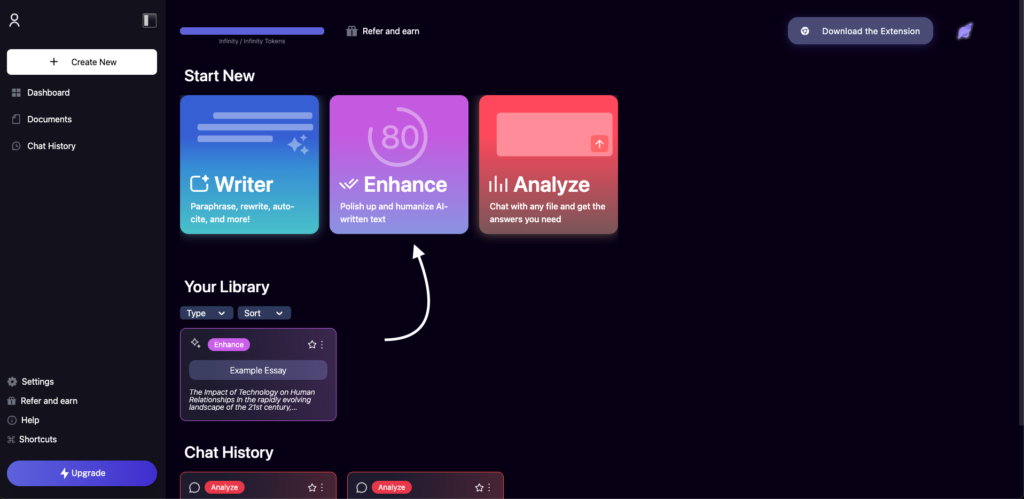
Once you click Enhance you will be guided to Conch’s Enhance tool 👇
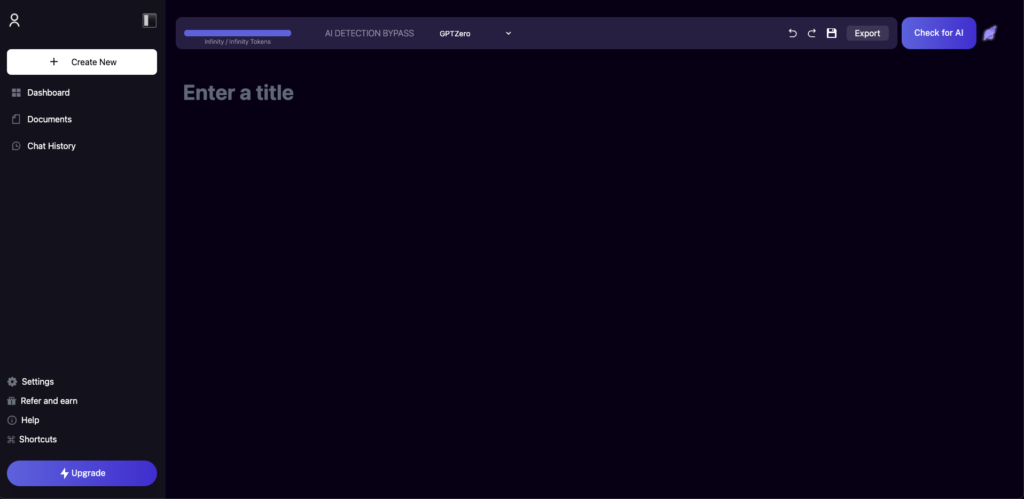
Step 3: Copy Your Essay Into Our Tool

Step 4: Click The ‘Check for AI’ Button In The Top-Right Corner

Step 5: Analyze The Results
Within minutes, our Enhance tool will analyze your content to determine it’s plagiarism score.

Step 6: Click ‘Humanize All’ To Automatically Paraphrase All of Your Content Within Minutes
This will paraphrase all of your content within minutes to save you from being questioned for plagiarism. It will also make your content AI-writing detector proof. You won’t have to worry about being detected by plagiarism checkers, nor will you have to worry about AI writing detectors detecting your content.

Before Enhancing The Content:

After Enhancing The Content:
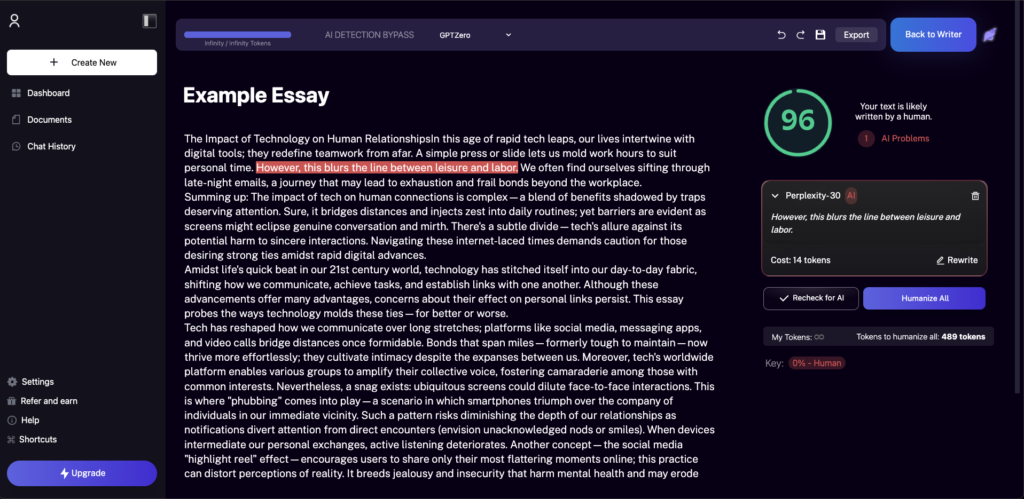
Step 7: Copy or Export Your Content and Submit It With Ease

Bonus Step: Copy Your Content Into Our Writer Tool To Write An Applaudable Essay Within Minutes


Sign up to use our tool for free, today!
How To Write A Good Hook For An Narrative Essay
When it comes to writing a narrative essay, the introduction plays a crucial role in capturing the reader’s attention. A well-crafted hook not only piques the reader’s curiosity but also sets the tone for the entire essay. In this guide, we will explore various techniques and strategies to help you write a good hook for your narrative essay, ensuring that your readers are engaged from the very beginning.
1. Understand the Purpose of a Hook:
Before we dive into the different types of hooks, it’s essential to understand why a hook is necessary. The primary purpose of a hook in a narrative essay is to grab the reader’s attention and make them want to continue reading. A strong hook can create an emotional connection between the reader and your story, leaving them eager to uncover what lies ahead.
2. Start with an Anecdote
One effective way to begin your narrative essay is by using an anecdote. Anecdotes are short stories or personal experiences that relate to the main theme or topic of your essay. By starting with an anecdote, you can instantly capture the reader’s interest and make them feel connected to your story. Ensure that your anecdote is brief, relevant, and impactful.
3. Use a Thought-Provoking Question
Another powerful technique to engage your readers is by posing a thought-provoking question. This type of hook encourages the reader to think critically and reflect upon the topic you are about to explore in your essay. The key is to choose a question that is relevant and stimulates curiosity. By doing so, you create a strong desire in the reader to find out the answer, compelling them to read further.
4. Paint a Vivid Picture
One of the most effective ways to engage your readers is by using descriptive language to paint a vivid picture. By appealing to the reader’s senses, you can transport them into the world of your narrative essay. Use powerful adjectives, sensory details, and figurative language to create engaging and immersive descriptions that captivate your readers from the first sentence.
5. Make an Impact with a Startling Fact or Statistic
Sometimes, shock value can be a powerful tool in capturing the reader’s attention. By presenting a startling fact or statistic, you instantly make an impact and create an element of surprise. This type of hook works particularly well when the fact or statistic is directly related to the main topic of your essay. It sparks curiosity and compels the reader to delve deeper into your narrative.
6. Start with a Quote
Quotes, especially those from well-known individuals, can be an excellent way to grab your reader’s attention. Choose a quote that is relevant to the theme or topic of your essay, and make sure it is thought-provoking or inspiring. By starting with a quote, you add credibility and intrigue to your narrative, enticing the reader to explore your essay further.
7. Use an Engaging Statement or Declaration
An engaging statement or declaration can instantly captivate the reader’s attention. By making a bold claim or stating an interesting fact, you create a sense of anticipation and curiosity in the reader’s mind. This type of hook is particularly effective when it challenges conventional wisdom or presents a unique perspective on the topic.
8. Employ Humor or Wit
Humor has the power to connect with readers and create an immediate bond. If appropriate for your narrative essay, consider starting with a humorous anecdote, pun, or witty remark. This type of hook not only entertains the reader but also establishes a friendly and approachable tone, making them more receptive to your story.
How To Write A Good Hook For An Expository Essay
Your expository essay may be filled with fascinating information and compelling arguments, but without a strong hook, your readers may never get to experience the depth of your work. A hook is the opening line or lines of your essay that immediately capture the reader’s attention and make them want to continue reading. In this guide, we will explore different strategies and techniques to help you write a good hook for your expository essay.
1. Understand Your Audience
One of the most crucial steps in writing a good hook is understanding your audience. Consider who will be reading your essay and what might interest them. Are they academics, professionals, or a general audience? Tailoring your hook to your specific audience will ensure that it resonates with them and entices them to read further.
2. Start with a Surprising Fact or Statistic
People love to be intrigued and surprised by new information. Starting your essay with a surprising fact or statistic related to your topic is an excellent way to grab your reader’s attention. For example, if you are writing an essay about the benefits of exercise, you could start with a statistic like, “Did you know that regular exercise can increase your lifespan by up to seven years?”
3. Use an Anecdote or Personal Story
Stories have a powerful impact on our emotions and can draw readers in. Sharing a personal anecdote or telling a story related to your topic can create an emotional connection with your readers. For instance, if your essay is about the importance of volunteering, you could begin with a personal story about how volunteering changed your life or the life of someone you know.
4. Pose a Thought-Provoking Question
Engaging your readers with a thought-provoking question can make them reflect on the topic and get them invested in your essay. Pose a question that challenges common beliefs or assumptions related to your topic. For example, if your essay is about the harmful effects of social media, you could start with a question like, “Do you ever wonder how social media is reshaping our relationships and self-esteem?”
5. Use a Powerful Quotation
Quotations from famous individuals can be a powerful tool to captivate your readers. Choose a quote that is relevant to your topic and resonates with your audience. It could be a thought-provoking statement or a powerful insight. For instance, if your essay is about the power of education, you could start with a quote from Nelson Mandela: “Education is the most powerful weapon which you can use to change the world.”
6. Create a Vivid Description
Painting a vivid picture with words can transport your readers into your essay. Use descriptive language to create a scene or introduce a setting related to your topic. This technique works especially well for essays that focus on places or events. For example, if your essay is about the Grand Canyon, you could start with a description like, “The blazing sun casts a golden glow over the rugged landscape, as the mighty Colorado River carves its way through the majestic red cliffs.”
7. Make a Bold Statement
Bold statements can be attention-grabbing and make your readers curious to learn more. Start your essay with a strong and controversial statement related to your topic. However, make sure to support your statement with evidence and arguments later in your essay. For example, if your essay is about climate change, you could begin with a bold statement like, “The fate of our planet hangs in the balance as we continue to ignore the devastating effects of climate change.”
How To Write A Good Hook For A Literary Analysis Essay
Writing a literary analysis essay can be a daunting task, especially when it comes to creating an engaging and captivating hook. The hook is the first sentence or two of your essay that grabs the reader’s attention and makes them want to continue reading. A good hook not only sets the tone for your essay but also establishes your credibility as a writer. In this guide, we will explore various strategies and techniques to help you write a good hook for your literary analysis essay.
1. Understand your audience
Before you start brainstorming ideas for your hook, it’s crucial to understand your audience. Consider the age, interests, and background of your readers. Are they familiar with the literary work you are analyzing? What might capture their attention and pique their curiosity? By tailoring your hook to your audience, you can increase the chances of making a strong impression right from the start.
2. Begin with a thought-provoking question
One effective way to hook your readers is by starting with a thought-provoking question. This technique encourages the reader to reflect on their own experiences or opinions, making them more likely to be engaged with your essay. For example, if you are analyzing a novel about social justice, you could start with a question like, “Have you ever wondered what it means to fight for justice in an unjust world?”
3. Use a striking statistic or fact
Another way to capture your reader’s attention is by using a striking statistic or fact related to the literary work you are analyzing. This can be a surprising piece of information that challenges common assumptions or sheds new light on the theme or subject matter of the work. For instance, if you are analyzing a Shakespearean play, you could start with a statistic like, “Did you know that Shakespeare invented over 1,700 words still in use today?”
4. Share an intriguing anecdote
Anecdotes are brief, interesting stories that can help you connect with your readers on a personal level. By sharing an intriguing anecdote related to the literary work or its author, you can create a sense of curiosity and draw your readers into your essay. For example, if you are analyzing a poem by Emily Dickinson, you could start with an anecdote about a mysterious encounter or an event that inspired the poem.
5. Begin with a compelling quote
Using a compelling quote from the literary work itself or from a relevant source can be an effective way to hook your readers. Make sure the quote is relevant to your analysis and captures the essence of the work or the theme you will be exploring. This can create a sense of intrigue and make your readers eager to learn more. For instance, if you are analyzing a novel by F. Scott Fitzgerald, you could start with a quote like, “So we beat on, boats against the current, borne back ceaselessly into the past.”
6. Create a vivid scene
Transporting your readers into a vivid scene can instantly grab their attention and make them feel immersed in the world of the literary work. Paint a picture with words and appeal to the senses by describing a captivating or pivotal moment from the work. This technique can evoke emotions and curiosity, compelling your readers to continue reading. For example, if you are analyzing a play by Arthur Miller, you could start by describing a tense confrontation between two characters on stage.
How To Write A Good Hook For A Research Paper
The hook is the opening line or paragraph of your research paper that grabs the reader’s attention and sets the tone for the rest of the essay. A good hook should be intriguing, captivating, and relevant to your topic. It should also create a sense of curiosity and make the reader want to continue reading. Here’s a step-by-step guide on how to write a good hook for a research paper:
1. Understand your audience
Before writing your hook, it’s important to understand who your target audience is. Consider their age, interests, and level of knowledge on the topic. This will help you tailor your hook to effectively engage your readers.
2. Start with a question
Pose a thought-provoking question related to your research topic. This will immediately engage the reader and make them curious about the answer. For example, if your research paper is about the impact of climate change, you could start with a question like, “Did you know that the Earth’s temperature has risen by 1.5 degrees Celsius in the past century?”
3. Use a shocking statistic
Presenting a surprising or shocking statistic can capture the reader’s attention. Choose a statistic that is relevant to your research and highlights the importance of your topic. For instance, if your paper is about the effects of smoking, you might begin with a statistic like, “Every year, smoking causes over 8 million deaths worldwide.”
4. Tell a compelling anecdote
Sharing a short and captivating anecdote can instantly draw the reader into your research paper. Choose a story that is relevant to your topic and demonstrates the importance of your research. For example, if your paper is about the importance of early childhood education, you could start with an anecdote about a successful individual who credits their achievements to a strong early education.
5. Use a powerful quote
Including a relevant and impactful quote from a notable person can be an effective way to hook your readers. Choose a quote that supports your thesis statement and adds credibility to your research. For instance, if your paper is about the power of education, you could start with a quote from Nelson Mandela, such as, “Education is the most powerful weapon which you can use to change the world.”
6. Create a vivid description
Paint a vivid picture in the reader’s mind by using descriptive language. This can be particularly effective when writing about a specific setting or event. For example, if your paper is about the history of the Eiffel Tower, you could begin with a description of the iconic structure, capturing the reader’s imagination and curiosity.
It is important to note that the hook is just the beginning of your research paper. Once you have captured the reader’s attention, you need to provide a clear thesis statement and a roadmap for the rest of your essay. Make sure to also keep the hook relevant to your topic throughout the entire paper to maintain the reader’s interest.
Conch AI is the original AI detection bypass tool. At Conch, we guarantee that there’s a 99.99% chance that you won’t get caught after using our tool. If you use ConchAI to write your essays you will be undetected by algorithms like GPTZero and TurnItIn. With Conch, you can write your essays 10x faster, AI detection free.
Our tool helps you add citations, it helps you rewrite content so that it’s undetectable by AI, and so much more, all to protect students’ time and let them focus on actually learning the content! So Chegg users, High School and college students, and anyone writing papers, use Conch to make your student life easier and bypass AI detection tools with ease. Conch AI currently has over +1 million users to date and is growing. Sign up and use Conch’s AI Essay writer for free today.
How Humour Can Be Added To Your Hook Without Distracting Readers From Your Essay’s Purpose

In the realm of essay writing, a good hook is essential to capture the reader’s attention from the very beginning. While there are numerous types of hooks, one that stands out is humor. When used effectively, humor can create a connection with the reader and make the essay more enjoyable to read. However, it’s crucial to strike a delicate balance so that the humor doesn’t overshadow the purpose of the essay. In this article, we will explore how humor or a joke can be cleverly incorporated into an essay hook without distracting from its main objective.
1. Understand Your Audience
To effectively use humor in an essay hook, it is essential to consider the target audience. Different groups of people have different preferences when it comes to humor. For instance, a joke that resonates with college students may not be as effective with professional executives. Therefore, it’s crucial to understand the demographics and interests of your intended readers before crafting a humorous hook.
2. Choose Relevant and Appropriate Humor
When using humor in an essay hook, it’s important to ensure that it is relevant and appropriate for the topic at hand. The joke should be aligned with the subject matter and add value to the overall message of the essay. For example, if you are writing an essay about the importance of environmental conservation, a lighthearted joke about recycling or renewable energy can be an effective hook that captures the reader’s attention.
3. Balance Humor and Purpose
While humor can be a powerful tool in capturing the reader’s attention, it’s crucial to strike a balance so that it doesn’t overshadow the main purpose of the essay. The joke should serve as an engaging introduction to the topic, but it should not detract from the overall seriousness or significance of the subject matter. The humor should complement the essay’s purpose, rather than distracting from it.
4. Keep it Concise
Incorporating humor into an essay hook requires brevity and conciseness. The joke or humorous statement should be snappy and to the point, grabbing the reader’s attention without overshadowing the main body of the essay. Remember, the hook is just the beginning, and the essay’s content is where the real substance lies.
5. Use Active Voice and Transition Words
To ensure a seamless transition from the hook to the main body of the essay, it’s important to use active voice and appropriate transition words. Active voice adds a sense of immediacy and engagement to the writing, while transition words create a smooth flow between the hook and the subsequent paragraphs. These linguistic techniques help to maintain the reader’s interest and ensure that the humor in the hook doesn’t feel disjointed from the rest of the essay.
Writing Your Hook Before Vs After Writing The Essay
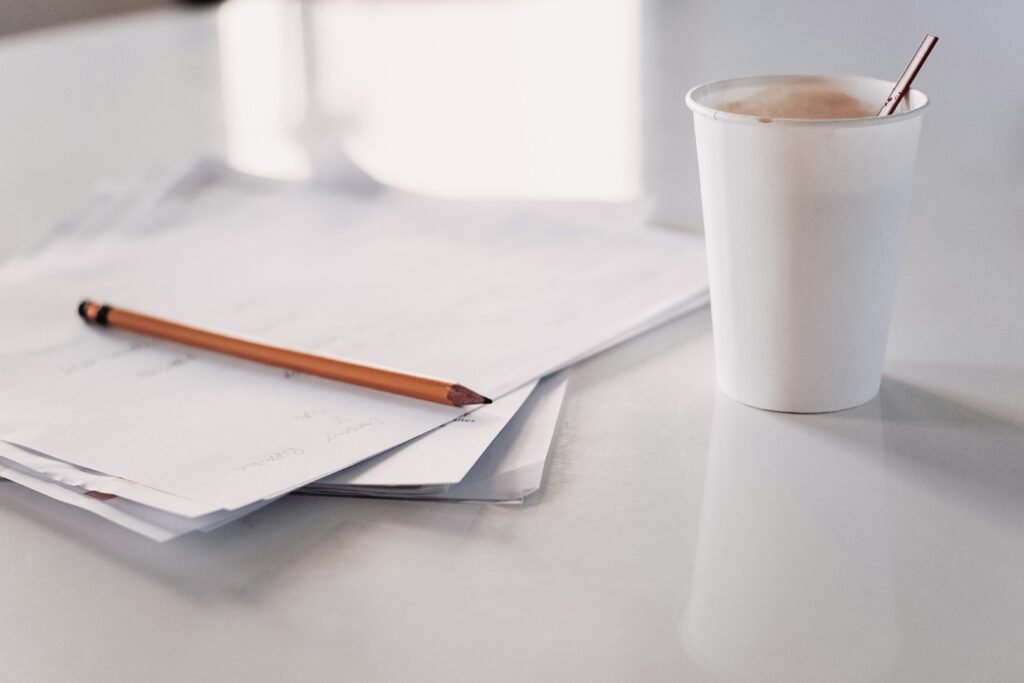
The hook is the first sentence or two of an essay that grabs the reader’s attention and entices them to continue reading. It sets the tone for the entire piece and determines whether the reader will be engaged or not. A strong hook can make all the difference in capturing the reader’s interest and making them want to delve deeper into the essay. So, when should the hook be written – before or after the rest of the essay?
Writing the Hook Before the Essay
Writing the hook before the rest of the essay can be an effective approach. By crafting an intriguing hook first, you have a clear direction and purpose for your essay. It becomes your guiding light, shaping the content and structure of your piece. The hook helps you stay focused and ensures that your writing remains captivating.
When you start with the hook, you have the opportunity to explore different angles and ideas that will captivate your readers. You can experiment with different techniques such as posing a thought-provoking question, using a shocking statistic or quote, or sharing a captivating anecdote. This allows you to find the most compelling hook that will grab your audience’s attention from the very beginning.
Writing the Hook After the Essay
On the other hand, some writers prefer to write the hook after they have completed the rest of the essay. This approach allows you to fully understand the main ideas and arguments you are presenting in your essay. By seeing the bigger picture, you can create a hook that is more closely aligned with the content of your essay.
When you write the hook after the essay, you have a better understanding of the tone and style that will be most effective. You have already developed your ideas and can craft a hook that complements the overall theme of your essay. This can result in a more cohesive and engaging introduction that seamlessly leads into the rest of your piece.
Finding the Perfect Balance
Whether you choose to write the hook before or after the essay, it is crucial to find the perfect balance between intrigue and information. Your hook should pique the reader’s curiosity without giving away too much of what is to come. It should provide a taste of what the essay will explore, leaving the reader hungry for more.
Keep in mind that the purpose of the hook is to captivate your audience and make them want to read on. It should be concise, attention-grabbing, and relevant to the topic at hand. Experiment with different hooks, revise them, and refine them until you find the one that best captures the essence of your essay.
Bypass AI Detector Tools For Free With Conch AI’s AI Essay Writer & AI Writing Assistant
At Conch AI, we understand the challenges that students face when it comes to writing essays. One of the most crucial aspects of essay writing is capturing the reader’s attention right from the beginning. This is where a good hook comes in – a captivating opening sentence or paragraph that grabs the reader’s interest and entices them to continue reading.
Conch AI is the original AI detection bypass tool, designed to ensure that your essays remain undetected by algorithms like GPTZero and TurnItIn. With a 99.99% guarantee of avoiding detection, ConchAI allows you to write your essays 10x faster and AI detection-free. Our tool goes beyond just bypassing AI detection – it helps you add citations, rewrite content to make it undetectable by AI, and much more. ConchAI is dedicated to protecting students’ time, allowing them to focus on actually learning the content.
With over 1 million users to date and growing, ConchAI has become the go-to tool for Chegg users, high school and college students, and anyone writing papers. It’s time to make your student life easier and bypass AI detection tools with ease. So, if you’re ready to take your essay writing to the next level, sign up and use Conch’s AI Essay writer for free today. Don’t let AI detection hold you back – unleash your creativity and excel in your academic journey with ConchAI.

Leave a Reply